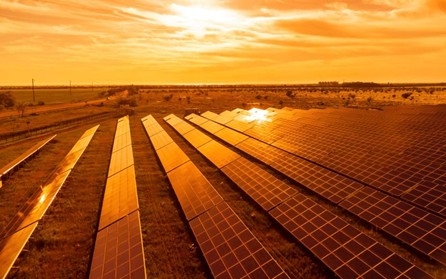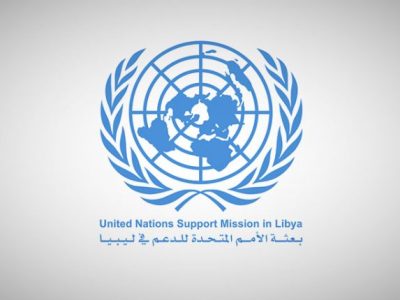Energy Economics: Beyond Oil in Post-Conflict Libya
Libya’s economy has long been tethered to a singular lifeline – oil. For decades, petroleum has dictated the tempo of national growth, state spending, and foreign diplomacy. But in the wake of recent efforts toward stabilization, a quiet yet critical question looms: Can Libya imagine – and build – a future beyond oil?
As post-civil war reconstruction continues, two powerful sectors are emerging as potential game changers: agriculture and renewable energy, particularly solar power. These industries not only offer diversification and sustainability but also a path towards stability, new global partnerships, and domestic economic growth.
From the Ground Up: An Agricultural Resilience
Historically, Libya was never perceived as an agricultural powerhouse, and that remains true today as it accounts for only about 2% of the country’s GDP. The arid climate, limited freshwater, and infrastructure neglect made farming a low-priority sector. Yet, in a twist of resilience, Libyan entrepreneurs and cooperatives are beginning to reimagine what’s possible in the country’s vast open land.
Libya relies heavily on imports, making up around three quarters of its national food demand and amounting to about $3 billion. With these imports becoming costlier, new technologies, modern irrigation systems, and other agricultural initiatives are coming into focus. Hydroponic and greenhouse farming projects are expanding, bringing optimism in regard to curbing food insecurity. Areas like the Jebel Akhdar in eastern Libya and the coastal regions around Misrata already have infrastructure for olive, date, and citrus production – with potential for a lot more. Look at regional neighbors Algeria and Tunisia, for example, both have seen relatively greater success in their agriculture sectors despite similar geologies and geographies. Like Libya, these countries are made up of mostly desert, but they’ve been able to take advantage of their coastal areas with Mediterranean climate. Libya too possesses arable land under a dry summer climate, specifically in the area between Benghazi and Tobruk.
The optimism for agricultural growth is more than about food – it’s about identity, sovereignty, and jobs. Libya has one of the youngest populations in North Africa. With unemployment among youth nearly 50% and farming labor decreasing in recent years, reviving agriculture offers a viable alternative to the dangerous allure of militias and illicit activities.
Libya’s Solar Promise: Powering the Region
As agriculture lays the foundation for food security, solar power lights the way toward energy independence. Being an African country that’s mostly desert, Libya boasts some of the highest solar irradiance levels in the world. The Libyan Desert, vast and underutilized, offers an extraordinary opportunity to harvest solar energy not just for domestic use but for export to Europe, where the green transition is in full swing.
Europe’s hunger for clean energy is no secret. With the Green Deal and commitments to net-zero emissions, EU nations are looking south for renewable imports. Libya, geographically closer than many sub-Saharan African nations, presents a strategic and cost-effective partner – if it can stabilize politically and invest in the necessary infrastructure.
The Libyan government has shown good intention, launching their Renewable Energy Strategic 2013-2025 Plan which aimed to increase renewable energy contribution to the country’s electric energy mix. While things may not have gone exactly as planned, multiple projects – including a massive 1,500 MW solar plant developed by PowerChina – are in the works. One potential concept involves linking Libyan solar farms to the European grid via undersea cables – similar to Morocco’s venture with the UK. The Desert-to-Europe model isn’t just a pipe dream; it’s increasingly a geopolitical opportunity for Libya to assert itself as a regional leader.
Transitioning from oil exporter to a mixed energy hub won’t be seamless. Integration of renewable power will need government backing, legal frameworks, and security. Moreover, Libya’s domestic energy needs – often disrupted by fuel shortages and electricity blackouts – must be met first to build public trust in energy diversification.
Oil Isn’t Going Anywhere, Yet
It’s important to acknowledge that oil is Libya’s economic backbone, and that will remain true for the foreseeable future. The National Oil Corporation (NOC) continues to negotiate lucrative contracts with global firms seeking to expand their operations in the country. With Libya holding Africa’s largest proven oil reserves, the industry will inevitably grow in the near future, barring any significant worsening of the security situation.
But here lies the danger: a false sense of economic security. Oil is volatile, subject to geopolitical shocks and price swings. More importantly, the global shift toward decarbonization means that Libya’s reliance on fossil fuels is not just environmentally problematic – it could be economically shortsighted.
A New Energy Equation
To envision Libya’s post-oil future is not to abandon its past but to broaden its horizons. Energy economics in post-conflict Libya must be redefined – not just as a matter of resource extraction, but as a multidimensional strategy combining agriculture, renewables, infrastructure, and human capital.
The roadmap isn’t simple. It demands political coherence, institutional reform, and international cooperation. It requires Libya to transcend its fragmented governance and channel oil revenues into sectors that build long-term resilience. But it also offers something rare in a region so often painted in despair: a chance for Libya to lead.




